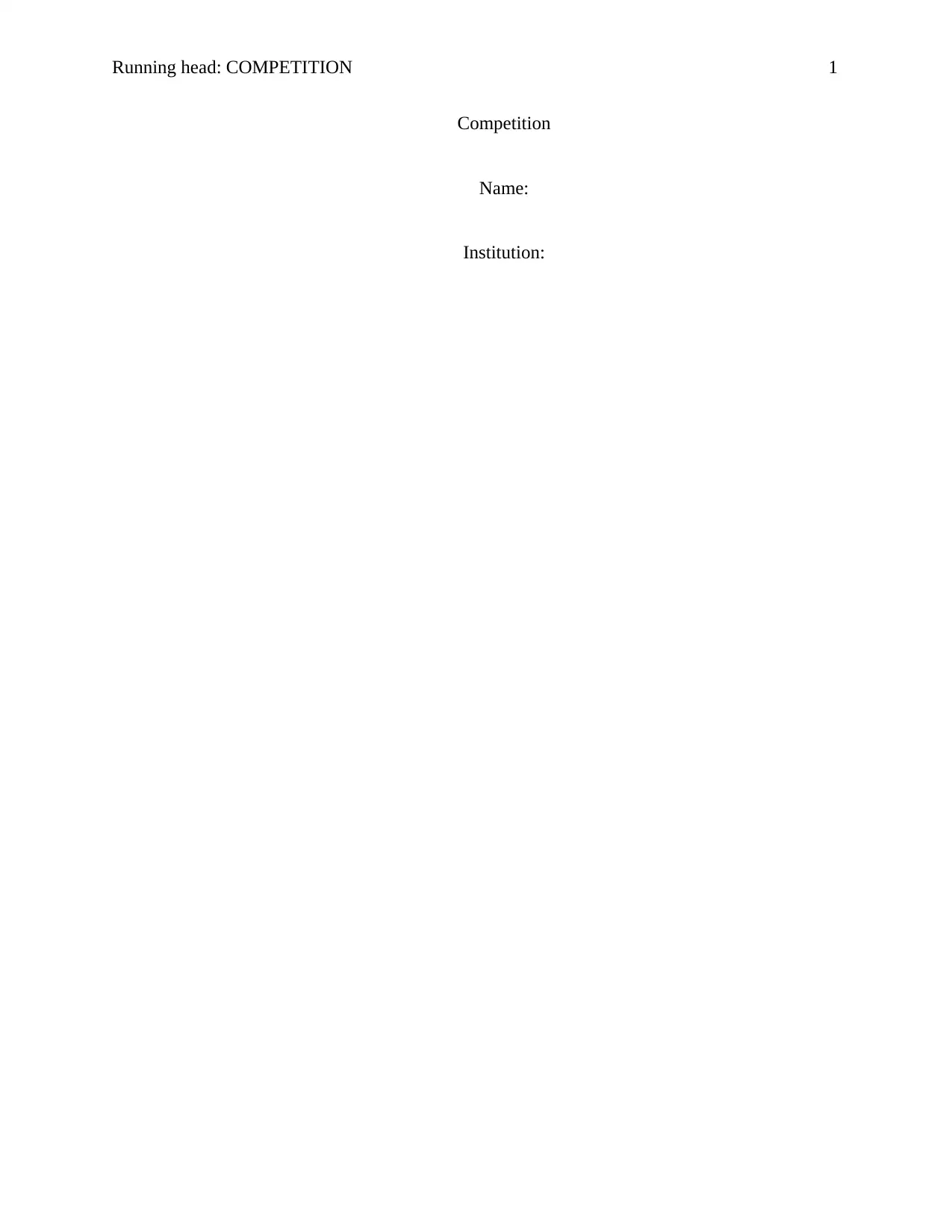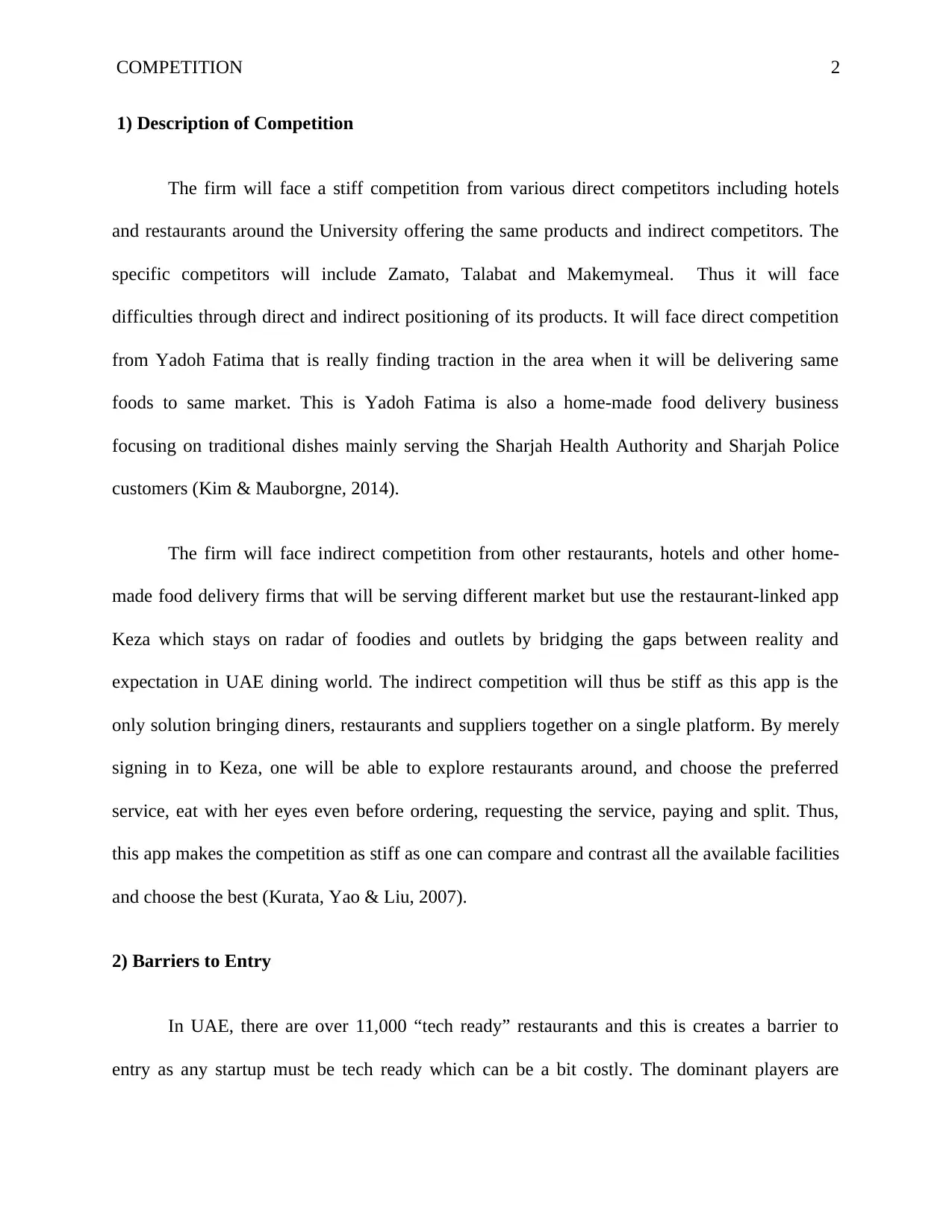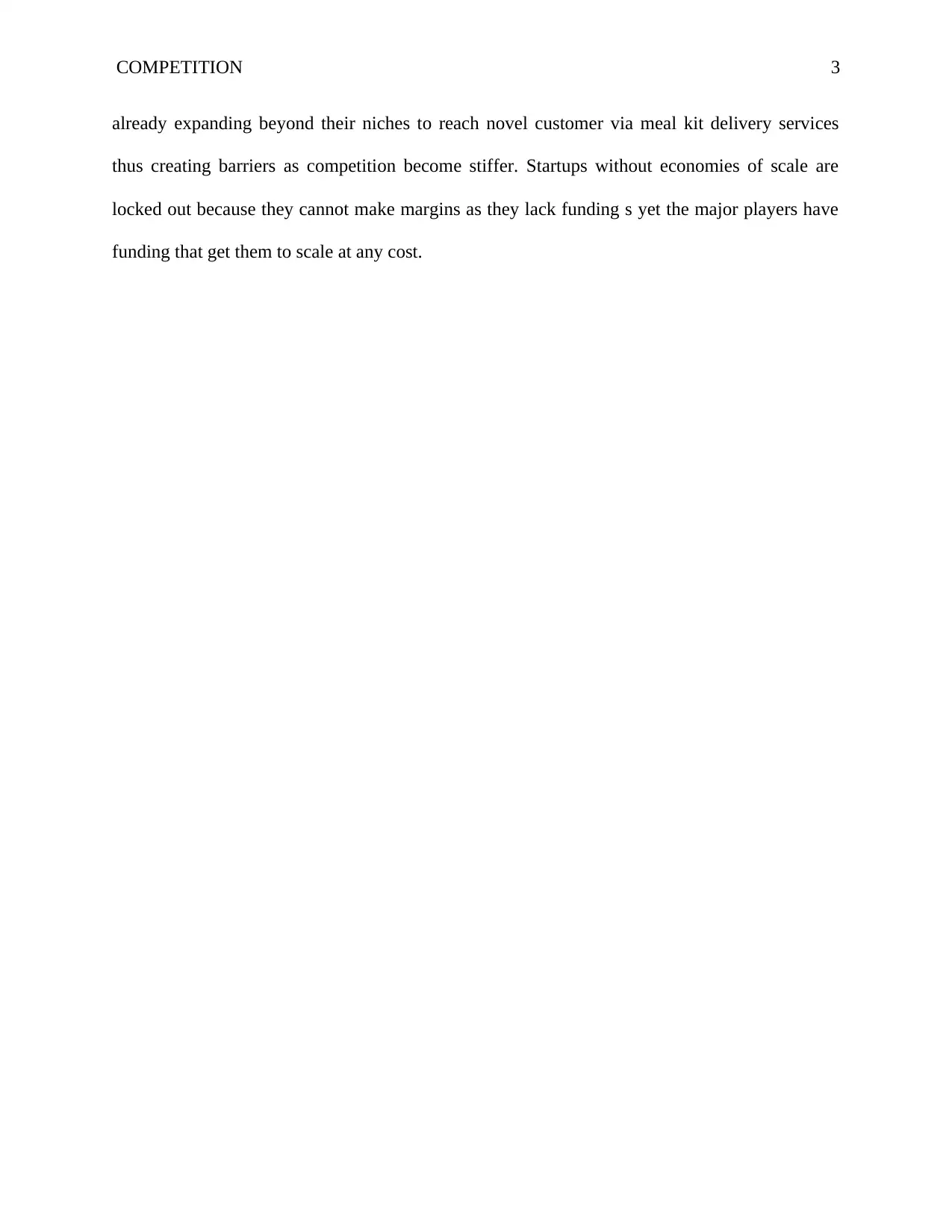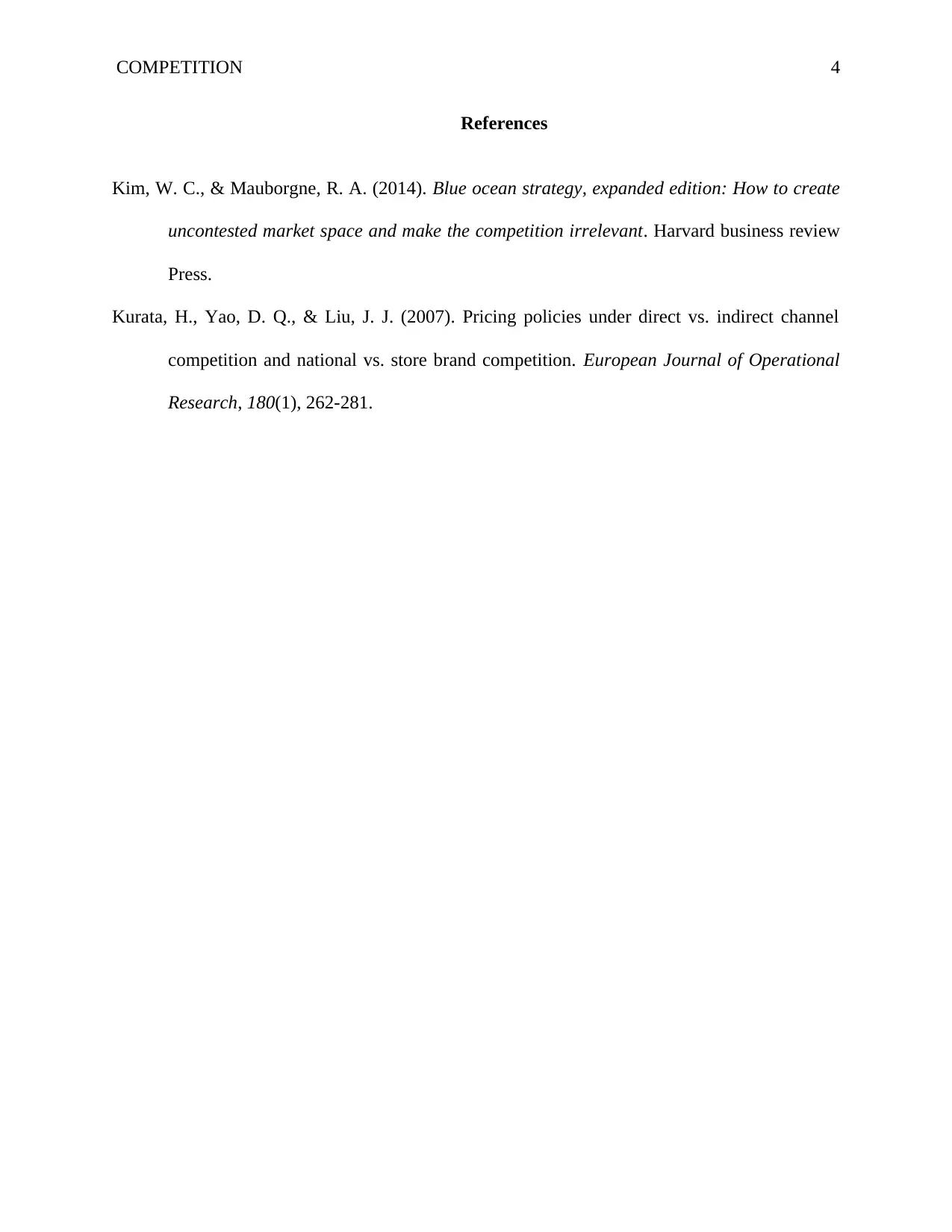Competition Analysis in the Food Industry
VerifiedAdded on 2020/04/21
|4
|455
|83
AI Summary
This assignment delves into the competitive landscape of the food industry, specifically focusing on a hypothetical firm entering the market. It analyzes direct competitors like home-cooked meal delivery services (e.g., Yadoh Fatima) and indirect competitors leveraging restaurant-linking apps (e.g., Keza). The analysis also explores barriers to entry in the UAE market, such as the need for technological readiness and the dominance of well-funded players.
Contribute Materials
Your contribution can guide someone’s learning journey. Share your
documents today.
1 out of 4




![[object Object]](/_next/static/media/star-bottom.7253800d.svg)